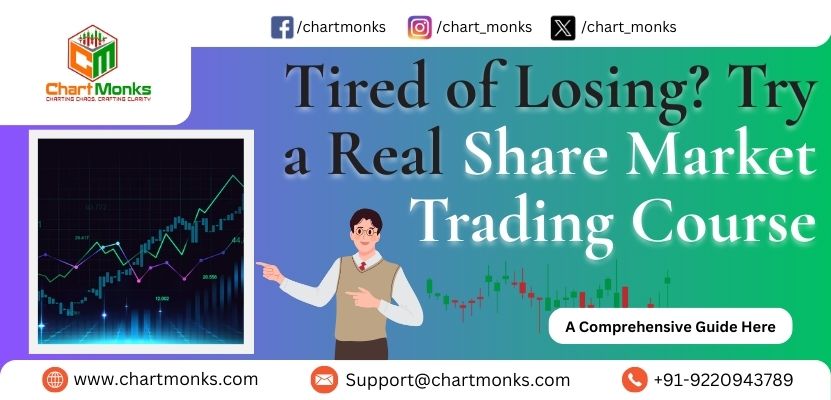Most traders think they understand risk. "Don’t risk more than you can afford to lose," they say. But risk in trading isn’t just about how much money you put into a trade—it’s about your mindset, your process, and your ability to survive.
In this blog, we’re not just going to define risk—we’re going to dismantle the common myths around it, and show you how professionals actually approach it.
1. Risk is Not Just About Money
Let’s start with the biggest misconception:
Risk is not about how much money you’re willing to lose.
It’s about how likely you are to lose it, how often you’re exposed to that risk, and what happens when you string multiple losses together. Most retail traders say things like:
- "I’ll risk $200 on this trade."
- "I’m okay losing 2% on this one."
(Assuming a $10,000 account.)
But they rarely ask:
- How does this risk fit into the bigger picture of my strategy?
- What happens if I lose 5 trades in a row?
- Can I emotionally and financially sustain this over 100 trades?
Professionals manage risk as a system, not a single decision.
2. The Real Purpose of Risk Management: Survival
The best traders don’t aim to win big—they aim to stay in the game long enough to let their edge play out.
Your first goal as a trader is not profit. It’s survival.
Here’s a truth bomb: even the best strategies will have drawdowns. If your risk management doesn’t account for that, you're done.
Let’s say you risk 5% of your capital per trade. With a $10,000 account, that’s $500. After just five losing trades, you’re down over 20%. That’s not just a financial hit—it’s a psychological one. Panic sets in. Logic breaks down. That’s how traders spiral.
Now imagine risking 1% ($100). Five losses = $500 or 5% drawdown. Still uncomfortable, but manageable. You’re calm. You can keep going.
Survival means:
- Emotionally stable through losses.
- Financially able to continue.
- Logically consistent in your process.
3. Risk is Psychological Before It's Mathematical
Most traders obsess over numbers:
- R-multiples
- Win rates
- Risk/reward ratios
Those are important—but they mean nothing if you can’t stick to them.
Risk is as much about behavior as it is about math.
You can have the perfect risk model, but if you panic during a drawdown or double your position to make back losses, the math breaks. That’s why:
- Journaling trades matters
- Tracking emotional triggers matters
- Having a pre-defined max loss per week matters
Your mind is the biggest variable in your risk management system.
4. The Illusion of Risk-Free Trading
Instagram is full of influencers showing 90% win rates and "no-risk" strategies. Let’s set the record straight:
There is no such thing as risk-free trading.
You’re always exposed to something:
- Market gaps
- News events
- Slippage
- Emotional tilt
The goal is not to eliminate risk. It’s to measure it, control it, and respect it.
If someone is promising you a strategy that “never loses,” walk away. Either it’s demo trading, it’s cherry-picked, or it’s a lie.
5. Position Sizing: The Silent Killer
Most blown accounts happen not because of bad strategies—but because of bad position sizing.
The wrong position size turns a small mistake into a big disaster.
Let’s keep it simple:
- If you have $10,000 in your account, risking 2% means your max loss is $200 per trade.
- If your stop-loss is 50 pips, you size your trade so that a 50-pip loss equals $200.
Simple math. But most traders skip it. They trade the same lot size every time, regardless of stop-loss size or account volatility.
This is not optional. Position sizing is your first line of defense.
6. One Risk Rule is Not Enough
Traders think setting a 2% risk per trade is enough. It’s not.
Professional risk management is multi-layered:
- Max Risk Per Trade – e.g., 1-2% per setup ($100–$200 on a $10,000 account)
- Max Daily Loss – stop trading if you’re down 4% in a day ($400)
- Max Weekly Loss – pause and review if you lose 6%+ in a week ($600+)
- Drawdown Limits – hard stop at 10-15% total drawdown ($1,000–$1,500)
- Time-Based Filters – avoid trading after big news events if you are not trading with Demand and Supply concept.
Risk management is not a setting. It’s a system.
7. Reward Obsession Destroys Risk Discipline
New traders love hunting for trades with 5R, 10R, 15R potential. That’s great—but it makes them:
- Pass on clean 2R trades
- Stay in trades too long hoping for more
- Move stop-losses to avoid being “wrong”
Obsession with reward often leads to disrespect for risk.
Professionals understand that consistency trumps home runs. Taking multiple high-probability 2R trades over time will outperform the random 10R attempt that rarely works out.
8. Risk Perception Changes With Experience
Early traders fear losses. Advanced traders understand them.
In the beginning:
- You feel the sting of every stop-out
- You doubt your system after a few losses
Over time:
- You treat each trade as a data point
- You trust your edge to play out over 100+ trades
Experience rewires your relationship with risk. It turns fear into feedback.
That’s why seasoned traders are calm. They’ve been punched in the face by the market—and survived.
9. Risk Without Process is Just Gambling
This is where most traders completely fail.
They focus on:
- Entry setups
- Indicators
- “High-probability” patterns
But they have no process. No rulebook. No system. And without a system, managing risk is like trying to build a house during an earthquake.
Every professional trader follows a process:
- Pre-trade checklist
- Defined entry/exit rules
- Daily routine
- Weekly review
Risk only makes sense when it’s tied to a repeatable, logical process.
Without it, you’re just making emotional bets.
Final Thoughts: Respect Risk or Quit Trading
If you walk away with one thing, let it be this:
Risk is not a setting on your trading platform. It’s the foundation of your survival.
At ChartMonks, we teach traders how to build systems around risk—not just strategies that look good in hindsight. In our Stock Technical Analysis Course, you’ll learn technical analysis alongside risk management, because one cannot thrive without the other. Without both, there is no strategy. There is no growth. There’s just noise, chaos, and eventually—blown accounts.
Want to Learn How Professionals Manage Risk?
Join our 1-Day Workshop where we break down:
- How to size trades based on your account
- How to build a risk system that survives losing streaks
- How to stay calm during market chaos
Prefer a deeper dive? Explore our Stock Technical Analysis Course to learn technical analysis from scratch, including how to pair it with institutional-grade risk frameworks.
We don’t sell dreams. We teach process.




